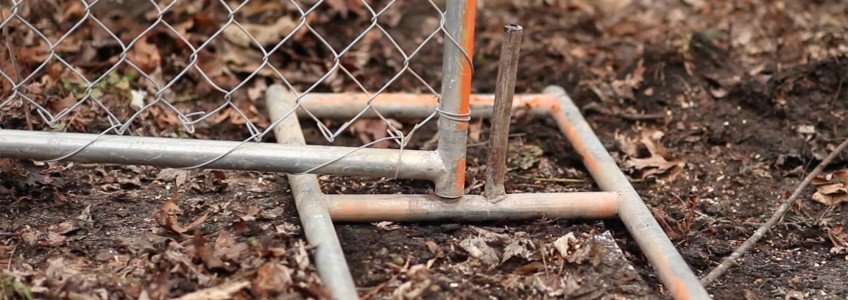
Spring construction season in the Greater Chicagoland area brings new opportunities—and a fresh set of challenges. One of the most persistent problems contractors face this time of year is managing site conditions caused by melting snow, spring rain, and thawing soil. Without proper planning, muddy ground and uncontrolled water flow can slow progress, create hazards, and violate municipal regulations. Effective sediment control, especially the correct use of tools like silt fence and timely construction fence rental, is essential to staying on track and in compliance.
Why Spring Conditions Create Unique Site Risks
Spring marks a transition period. Ground that was frozen for months begins to thaw, leading to saturated soil. Add frequent rainfall, and job sites can quickly become muddy and unstable. This isn’t just an inconvenience—it’s a real risk. Trucks can get stuck, footing excavation becomes difficult, and water runoff can carry loose sediment into storm drains and nearby properties. These issues are especially common in suburban developments built on former farmland or open tracts of land with little established vegetation to stabilize the soil.
In the city, drainage systems may already be stressed during spring, and any sediment leaving a job site can cause blockages or contamination. Local ordinances in Cook County and surrounding jurisdictions require sediment control plans on most construction projects. Violations can result in fines, stop-work orders, or delays in inspection schedules.
Silt Fence: Still the Front Line for Sediment Control
Despite evolving technologies, the silt fence remains a first line of defense for most Chicagoland builders. This simple barrier made of synthetic fabric is installed along the downslope edge of disturbed soil. It helps trap sediment while allowing water to pass through at a controlled rate. But not all silt fences are created equal—and improper installation can render them useless.
A common mistake is placing silt fence in areas with high water flow or failing to bury the bottom of the fence in the soil. In windy areas or during storms, a poorly anchored fence can collapse or be bypassed entirely. Best practices call for regular inspection, especially after rain. If sediment builds up halfway up the height of the fabric, it’s time to replace or clean it. City inspectors increasingly look for documentation showing that fences were installed correctly and maintained throughout the job.
Contractors should also match fence type to soil conditions. In sandy areas or sites with a steep slope, reinforced silt fencing or additional diversion tools may be needed.
Construction Fence Rental: Controlling Site Access and Runoff
While silt fences control sediment, construction fence rental serves multiple functions—security, boundary marking, and crowd control. In spring, it takes on another role: managing foot and vehicle traffic to minimize disturbance of already saturated ground. A clear perimeter helps subcontractors avoid tracking mud outside of work zones and provides a place to post signage for erosion control rules and access points.
In urban projects, temporary construction fencing is often required to protect sidewalks and public access areas. These rentals can be customized with screening materials that also reduce dust and wind exposure, both of which are more common in the variable spring climate.
When selecting a fence rental provider, contractors should ask about installation timing and emergency response options. Spring weather can change fast, and a fence blown down in a storm is both a security risk and a compliance issue.
Local Regulations and Enforcement Are Tightening
Municipalities around Greater Chicago are tightening their enforcement on erosion and sediment control. Builders in towns like Naperville, Schaumburg, and Orland Park must submit erosion control plans with permit applications. Larger developments may need to follow SWPPP (Stormwater Pollution Prevention Plan) standards under Illinois EPA guidelines.
In these jurisdictions, inspectors may visit sites unannounced and check for silt fence installation, perimeter controls, and overall cleanliness. Documented maintenance logs and quick response to violations often make the difference between a warning and a fine.
Preparing Now Avoids Bigger Costs Later
Spring construction in Chicagoland demands a proactive approach. By investing in well-placed silt fence, using construction fence rental to control site access, and staying current on local codes, builders can reduce risk, avoid delays, and keep crews moving safely and efficiently.
It’s not just about keeping the site clean—it’s about protecting timelines, budgets, and your reputation.
Call us today to schedule your silt fence and temporary construction fence rental installation for your upcoming project.






